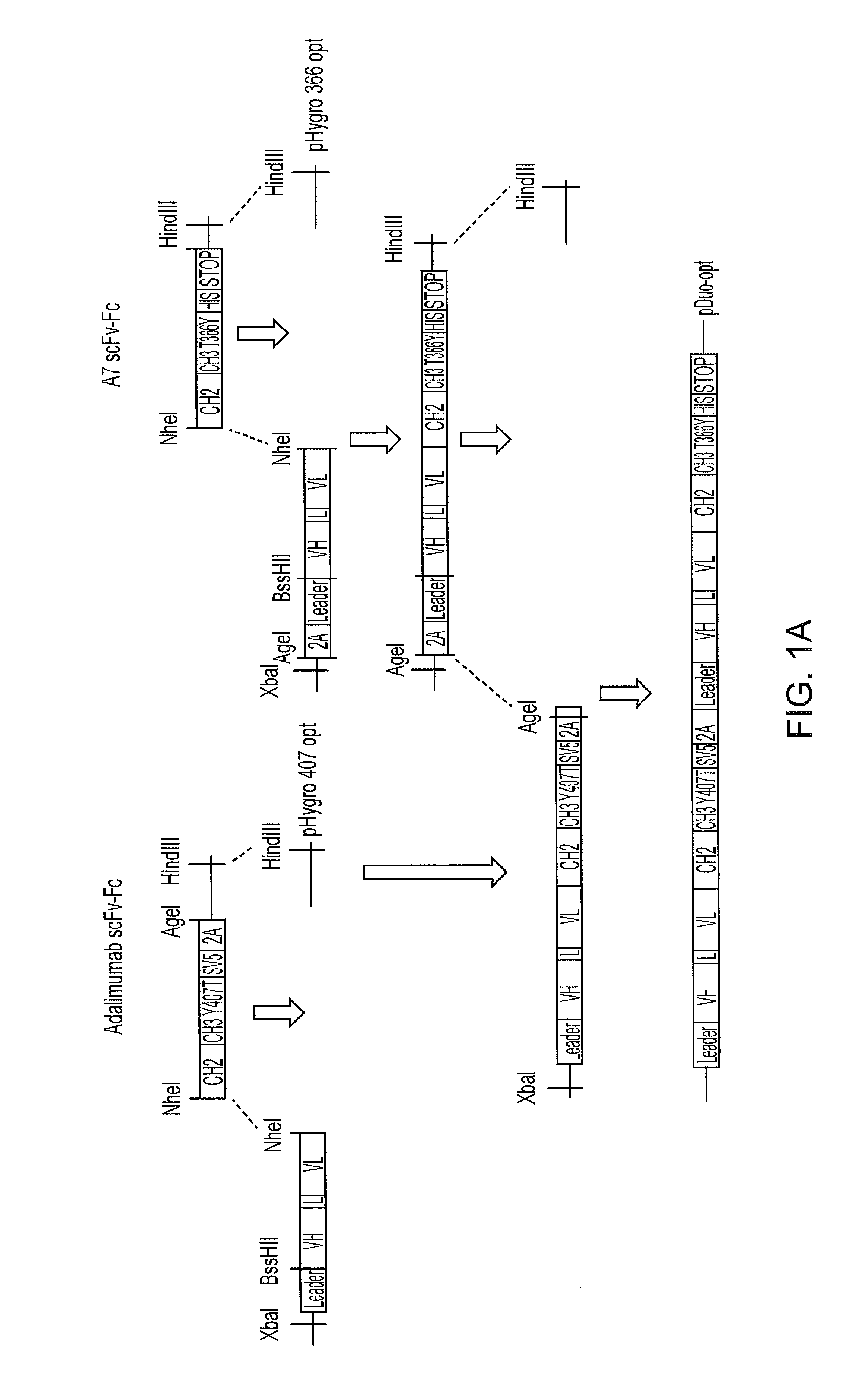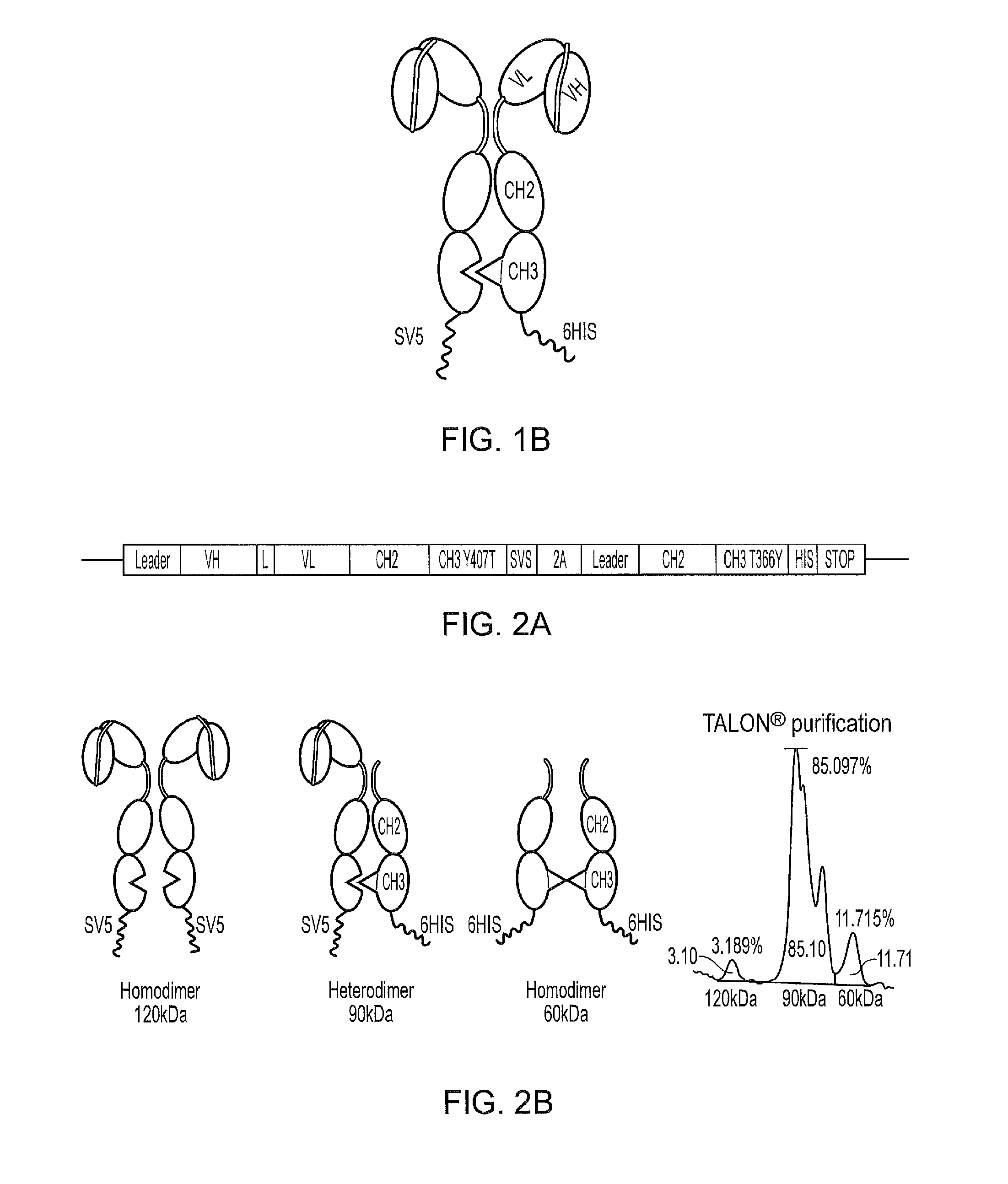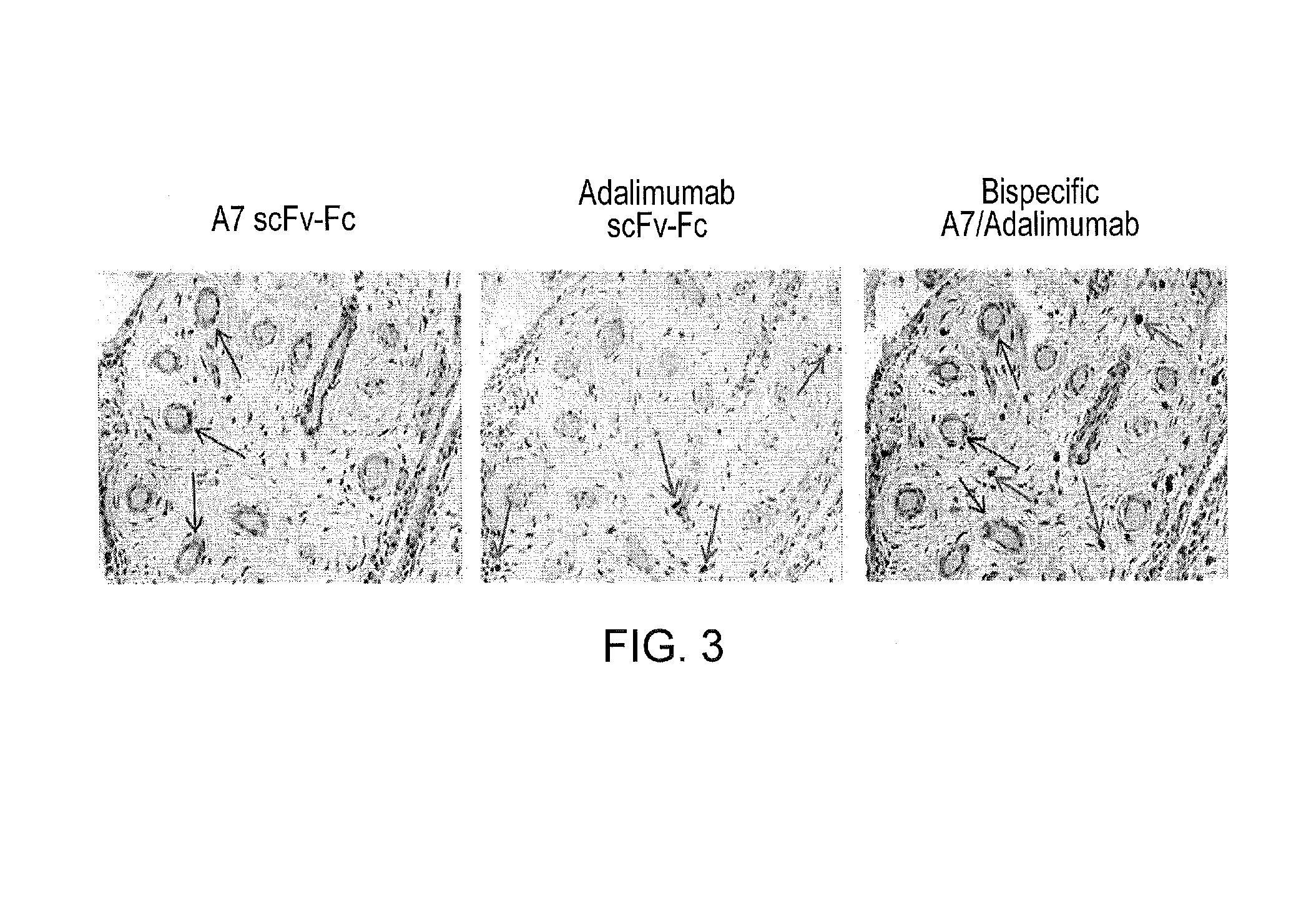Bispecific antibody against tnf-alpha and synovial microvasculature of arthritis patients
- Summary
- Abstract
- Description
- Claims
- Application Information
AI Technical Summary
Problems solved by technology
Method used
Image
Examples
example 1
Generation of scFv-A7-Fc and its Coupling with Adalimumab scFv to Produce a Bispecific Antibody
[0171]The present inventors have developed a bispecific antibody for A7 / Adalimumab using Knobs-into-Holes technology.
[0172]The sequence for scFvA7 (originally derived from phage display using the Tomlinson library and produced by E. coli) was optimised for Chinese Hamster Ovary (CHO) expression, using GeneArt DNA synthesis service (Life Technologies). The sequences for the VH and VL domains of Adalimumab were obtained from WO 97 / 29131. The scFv format sequence was optimised for CHO expression and synthesised using GeneArt service, linking the two variable domains with a serine-glycine linker (SSGGGGSGGGGSGGGGS) in VH-VL orientation.
[0173]The scFvA7 antibody fragment was fused with the hinge, CH2 and CH3 domains of Human IgG1 carrying the T366Y mutation (Knob). The Adalimumab derived scFv sequence was fused with the hinge, CH2 and CH3 domains of Human IgG1 carrying the Y407T mutation (Hole)...
example 2
The Reactivity of the A7 / Adalimumab Bispecific Antibody on Tissue Sections
[0179]Bispecific antibody reactivity on tissue was assessed in paraffin embedded formalin fixed tissue section and in OCT embedded frozen sections using immunohistochemistry (IHC).
[0180]Paraffin embedded tissue sections of human arthritic synovium were used for the testing of bispecific A7 / Adalimuab antibody reactivity in comparison to A7 scFv-Fc and Adalimumab scFv-Fc antibodies independently. Tissue sections were dewaxed and the antigen was retrieved using proteinase K enzymatic reaction. Endogenous peroxidase activity was blocked using 3% H2O2 in methanol and non-specific protein binding sites were blocked using a protein block solution. Bound biotinylated antibodies on the tissue were detected using streptavidin-HRP.
[0181]A representative staining in arthritic synovium is shown in FIG. 3. A7 reactivity was confined in the vascular region of the synovium (blue arrows), while the Adalimumab reactivity was sp...
example 3
In Vivo Dosage and Administration Efficiency of the Bispecific Antibody
[0185]The in vivo localisation of the scFv-Fc bispecific antibody to the tissue of interest is demonstrated using time-domain near-infrared optical imaging.
[0186]This demonstrates that the bispecific molecule preferentially targets the inflamed synovium over anti-TNF monovalent antibody. Localisation data is be coupled with pharmacokinetic data showing that antibody clearance is not affected by the manipulation of the antibody to form a bispecific compound. Pharmacokinetic measurements is used to demonstrate the antibody clearance rate in mice.
[0187]All publications mentioned in the above specification are herein incorporated by reference. Various modifications and variations of the described methods and system of the invention will be apparent to those skilled in the art without departing from the scope and spirit of the invention. Although the invention has been described in connection with specific preferred e...
PUM
| Property | Measurement | Unit |
|---|---|---|
| Fraction | aaaaa | aaaaa |
| Nucleic acid sequence | aaaaa | aaaaa |
Abstract
Description
Claims
Application Information
 Login to view more
Login to view more - R&D Engineer
- R&D Manager
- IP Professional
- Industry Leading Data Capabilities
- Powerful AI technology
- Patent DNA Extraction
Browse by: Latest US Patents, China's latest patents, Technical Efficacy Thesaurus, Application Domain, Technology Topic.
© 2024 PatSnap. All rights reserved.Legal|Privacy policy|Modern Slavery Act Transparency Statement|Sitemap



